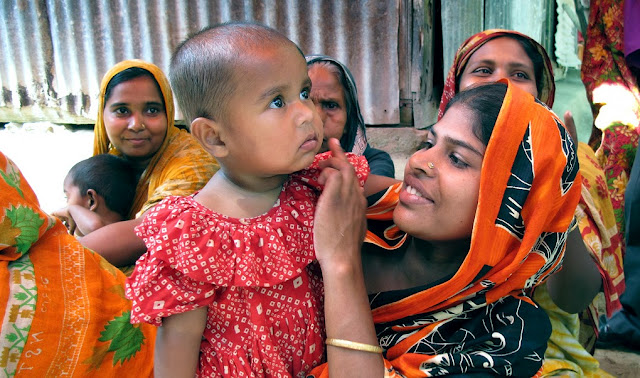“Maternal undernutrition is often overlooked as a strategy for reducing poverty and as a key intervention to reduce maternal mortality and morbidity,” said Mary Ellen Stanton, senior maternal health advisor at the U.S. Agency for International Development. Stanton was joined by Dr. Doyin Oluwole, director of the Africa’s Health in 2010 program, and Amy Webb Girard, assistant professor at the Emory University School of Public Health, in
the final meeting of the Advancing Policy Dialogue on Maternal Health series on December 15 where they addressed the linkages between poverty, undernutrition, and poor maternal health outcomes.
The Cycle of Malnutrition and Poverty
Many factors contribute to a woman’s nutritional status, including lack of capital, access to land, and poverty; thus, said Oluwole, “we must adopt a multi-pronged and multi-sectoral response.”
“General malnutrition is usually associated with iron-deficiency anemia, which leads to poor cognitive function and educational achievement, poor health, and fatigue.” Oluwole said. “These three factors lead to low worker productivity, and low worker productivity leads to income poverty.”
“All of these aggravate malnutrition and so the vicious cycle of malnutrition and poverty continues,” said Oluwole. To break this cycle, she pointed out that countries like Malawi and Mexico have implemented various multi-sectoral interventions that have “stimulated economic growth; implemented targeted social, health, and nutrition programs; and put in place safety nets.”
“In the window of opportunity during pregnancy and the first two years of life, we can make a big difference,” Oluwole said. She advocated for an “integrated anemia package” that provides anti-malarials, de-worming medicine, iron folic acid tablets, and extra food during pregnancy. She also noted the importance of family planning and targeted high-coverage interventions, such as salt iodization, vitamin A supplementation, and breastfeeding promotion.
In conclusion, Oluwole provided several recommendations for the development community to improve maternal mortality rates and undernutrition of women:- Promote universal primary and secondary education, especially for girls
- Stimulate economic growth with a focus on gender and equity
- Invest in infrastructure to reduce transportation time to hospitals
- Postpone age of marriage and of first pregnancy
- Provide targeted and effective nutrition and health interventions
- Encourage private sector participation and government leadership
- Integrate the maternal health and nutrition communities and services
Maternal Undernutrition: Our Global Disgrace
“We don’t tend to look at maternal nutrition and its impacts on the woman herself,” said Girard. The lack of data on the relationship between nutrition and maternal health outcomes “hampers our ability to move maternal nutrition onto the health and development agenda,” she added.
“Anemia is widespread; worldwide, it is a significant public health burden, both in women of reproductive age as well as in pregnant women,” said Girard. Studies have shown that moderate anemia increases risk of hemorrhage and may also increase the risk of sepsis, while severe anemia has been shown to directly contribute to maternal mortality. Targeted interventions can help reduce these risks greatly. “For every one gram per deciliter increase in hemoglobin level, you can reduce maternal mortality by approximately 25 percent, but the mechanisms by which this occurs are not well elucidated,” noted Girard.
“We need to include women not as just targets of nutritional interventions, but as beneficiaries in their own health,” said Girard. Key nutritional interventions such as micronutrient supplementation, fortification, and behavior change communication can help to improve not only fetal, infant, and child health, but can also reduce maternal morbidity and mortality. In addition, Girard recommended the following strategies to achieve greater impact:- Improve nutrition throughout the life cycle, not just during pregnancy
- Look for alternate strategies for micronutrient delivery
- Integrate maternal nutrition into food security and agricultural strategies
- Collect indicators specific to women’s health impacts
- Recognize and address gender bias
Together, these strategies can help improve access to nutrition and health services, as well as adequate food for women throughout their lives. “We need to integrate health and nutrition – they are actually the same pillar, complementing each other,” Girard concluded.
Photo Credit: “Bangladesh mothers, kids,” courtesy of flickr user Bread for the World.
 A Publication of the Stimson Center.
A Publication of the Stimson Center.






